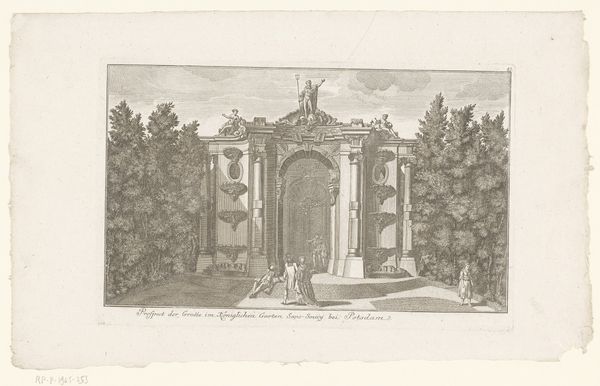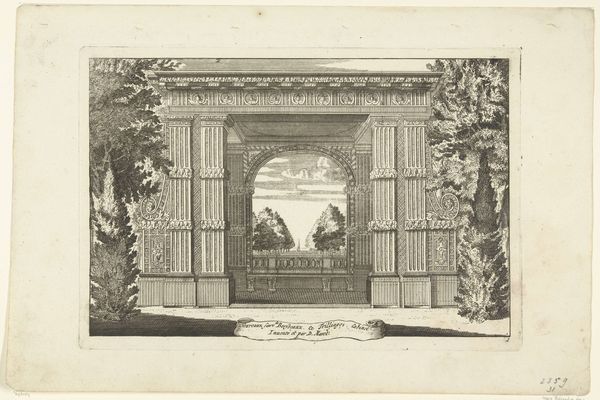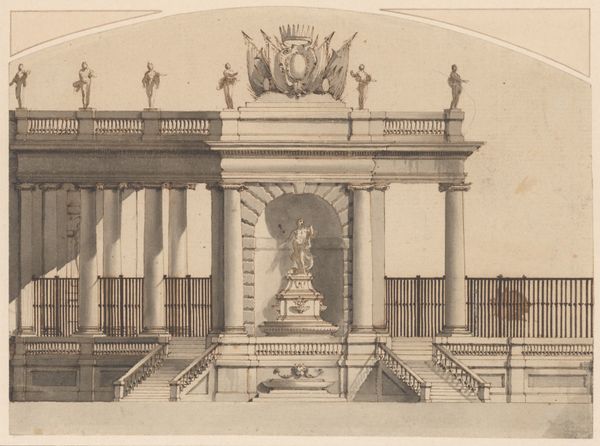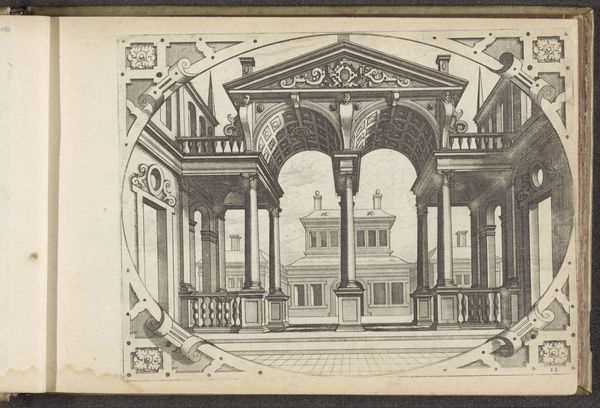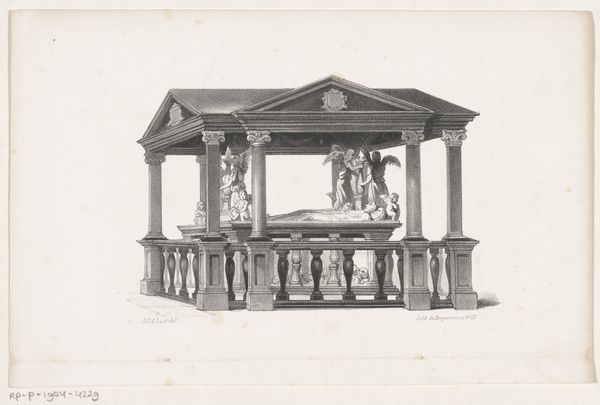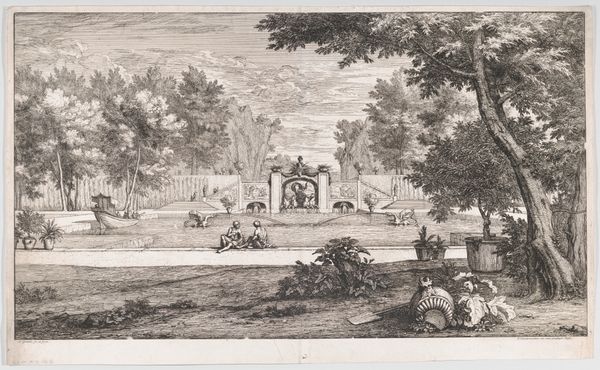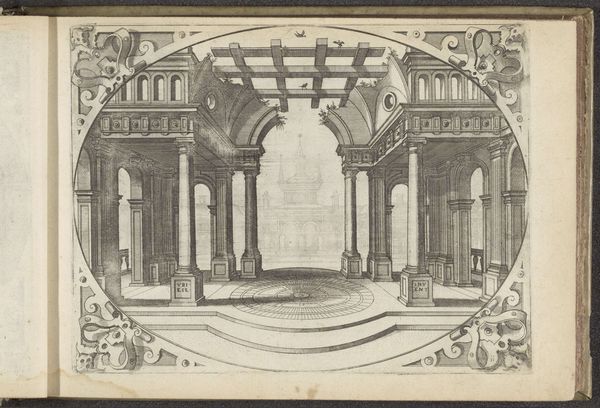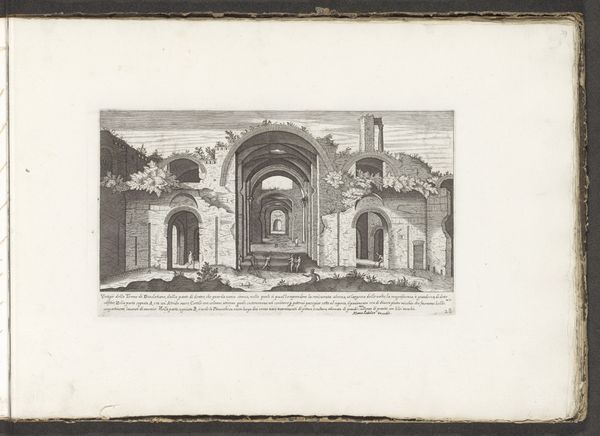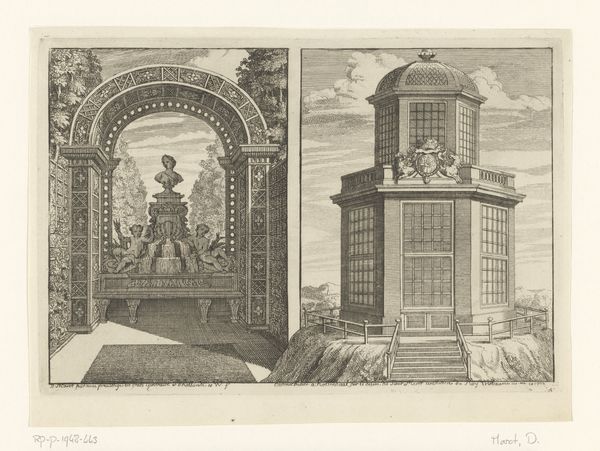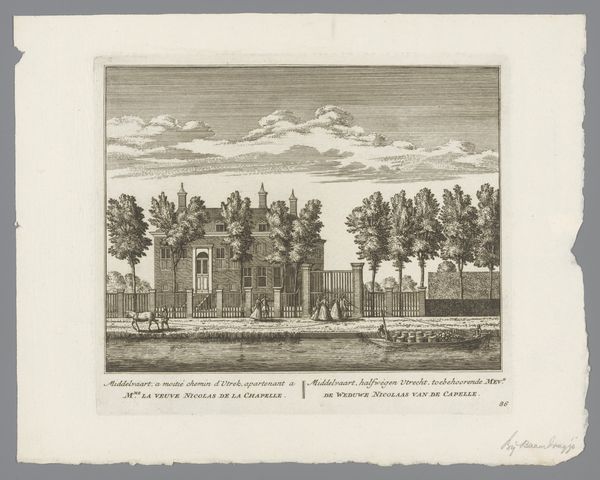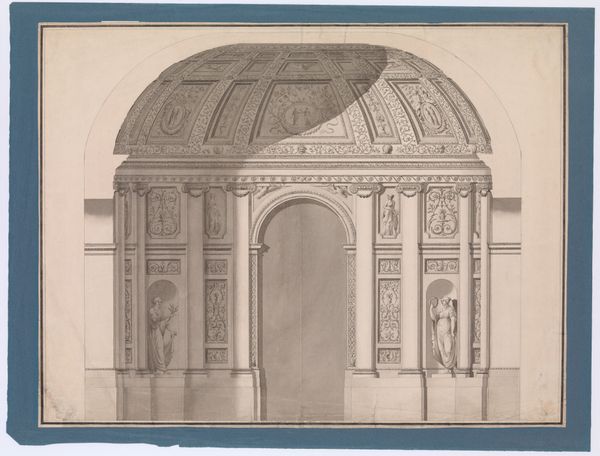
print, engraving, architecture
#
baroque
# print
#
landscape
#
engraving
#
architecture
Dimensions: height 213 mm, width 324 mm
Copyright: Rijks Museum: Open Domain
Curator: Here we have "Gezicht op een colonnade in de tuinen van Slot Sanssouci", or "View of a Colonnade in the Gardens of Sanssouci Palace". Created sometime between 1747 and 1774, it is currently held in the Rijksmuseum collection. Editor: It’s immediately striking, isn’t it? So structured, precise, yet it has this dreamy, almost theatrical quality, like a stage set waiting for the actors to appear. I feel like I am in a play or a Baroque music video. Curator: Exactly. This work is an engraving, meaning the image is incised into a metal plate. The process, labor-intensive and highly skilled, allowed for the mass production of images, thus shaping the consumption of architectural imagery and ideals. It offered the aspirational class of the time a way to fantasize about palaces and nobility they might never visit. Editor: The act of engraving itself reminds me of slow living. No generative AI, just time and skill. But looking closer, it's interesting how this supposedly objective rendering of architecture evokes such an artificial scene; almost everything, the perfect symmetry, and the stylized figures, feels idealized. Curator: The choice of medium highlights the interplay between art, labor, and consumption. Each print from the engraved plate allowed the Baroque aesthetic, which valorized ornamentation, lavish displays, and powerful architecture, to reach a far wider audience than would otherwise be able to admire this architecture. Editor: I am interested by how this engraving technique shapes my experience, everything rendered so sharply that I can sense the material realities but struggle to suspend my disbelief in the fictional reality. I begin wondering about those who consumed the imagery... did the fantasy of access amplify or quell any actual longing to inhabit this architectural world? Curator: Good questions, but difficult to prove using this primary source alone. This print provides insight into 18th-century production and dissemination. And reminds us how social desires were intricately intertwined with emerging commercial print networks. Editor: Ultimately, this seemingly simple landscape speaks volumes about longing, representation, and access to culture, or maybe I’m just projecting again, hmm. Curator: No, I believe it raises important connections worth contemplating.
Comments
No comments
Be the first to comment and join the conversation on the ultimate creative platform.
